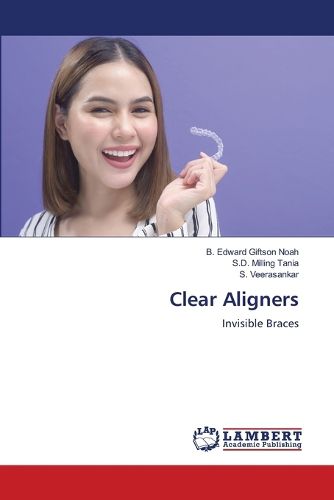Readings Newsletter
Become a Readings Member to make your shopping experience even easier.
Sign in or sign up for free!
You’re not far away from qualifying for FREE standard shipping within Australia
You’ve qualified for FREE standard shipping within Australia
The cart is loading…






This title is printed to order. This book may have been self-published. If so, we cannot guarantee the quality of the content. In the main most books will have gone through the editing process however some may not. We therefore suggest that you be aware of this before ordering this book. If in doubt check either the author or publisher’s details as we are unable to accept any returns unless they are faulty. Please contact us if you have any questions.
Clear aligner therapy (CAT) has become a widely accepted form of orthodontic treatment, and among the various factors that influence the effectiveness of clear aligners, the material used in their fabrication plays a crucial role. Advances in the chemistry of aligner materials have the potential to significantly transform the therapeutic applications of CAT. Without these advancements, the inherent biomechanical limitations of CAT could hinder its progress, causing clear aligners to underperform compared to traditional fixed orthodontic appliances. Clear aligners offer advantages over fixed appliances, including improved patient comfort and aesthetics. Treatment with clear aligners has also been associated with better Oral Health-Related Quality of Life (OHRQoL) ratings compared to conventional labially placed metal fixed appliances.
$9.00 standard shipping within Australia
FREE standard shipping within Australia for orders over $100.00
Express & International shipping calculated at checkout
Stock availability can be subject to change without notice. We recommend calling the shop or contacting our online team to check availability of low stock items. Please see our Shopping Online page for more details.
This title is printed to order. This book may have been self-published. If so, we cannot guarantee the quality of the content. In the main most books will have gone through the editing process however some may not. We therefore suggest that you be aware of this before ordering this book. If in doubt check either the author or publisher’s details as we are unable to accept any returns unless they are faulty. Please contact us if you have any questions.
Clear aligner therapy (CAT) has become a widely accepted form of orthodontic treatment, and among the various factors that influence the effectiveness of clear aligners, the material used in their fabrication plays a crucial role. Advances in the chemistry of aligner materials have the potential to significantly transform the therapeutic applications of CAT. Without these advancements, the inherent biomechanical limitations of CAT could hinder its progress, causing clear aligners to underperform compared to traditional fixed orthodontic appliances. Clear aligners offer advantages over fixed appliances, including improved patient comfort and aesthetics. Treatment with clear aligners has also been associated with better Oral Health-Related Quality of Life (OHRQoL) ratings compared to conventional labially placed metal fixed appliances.